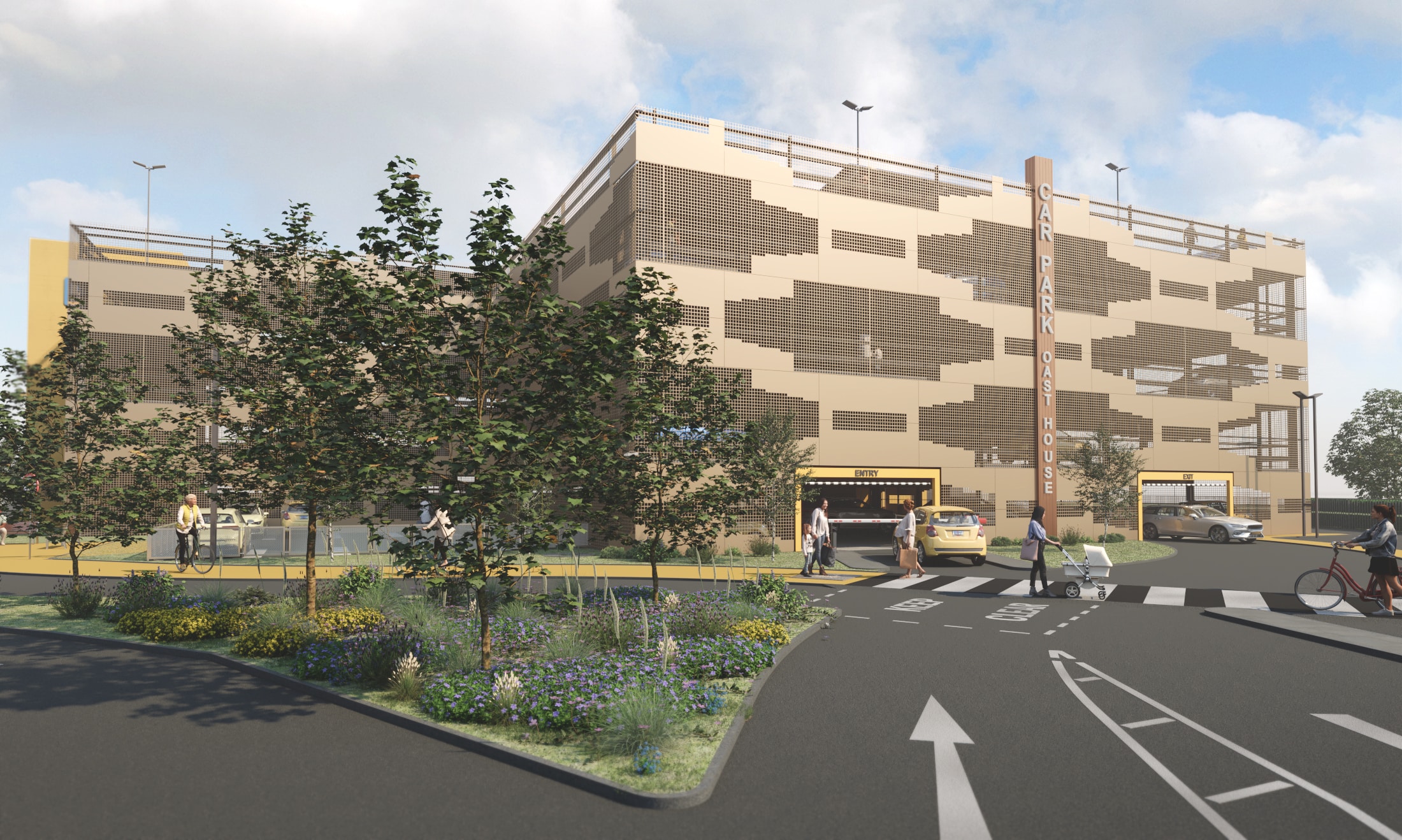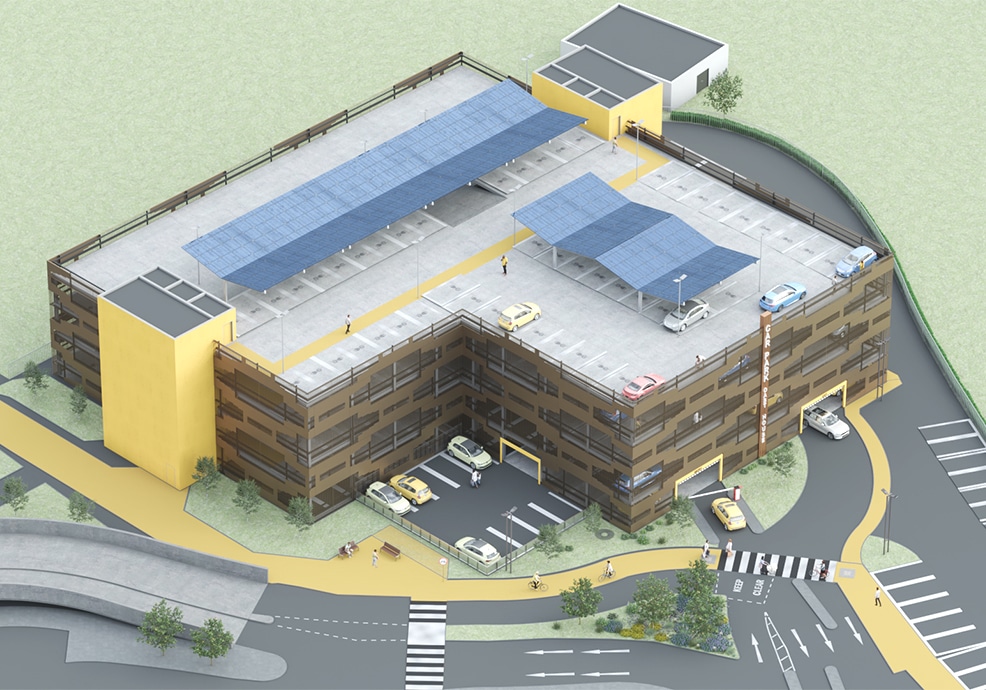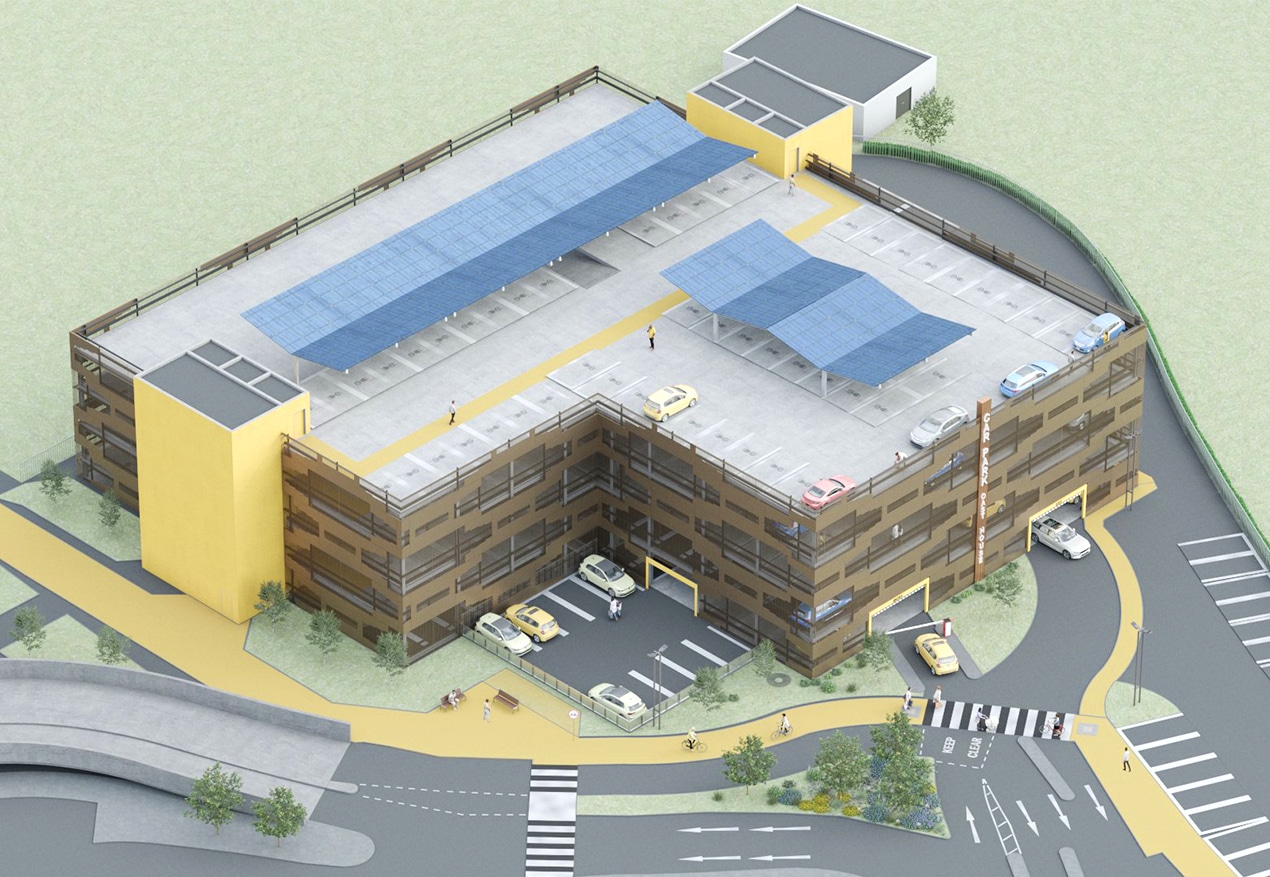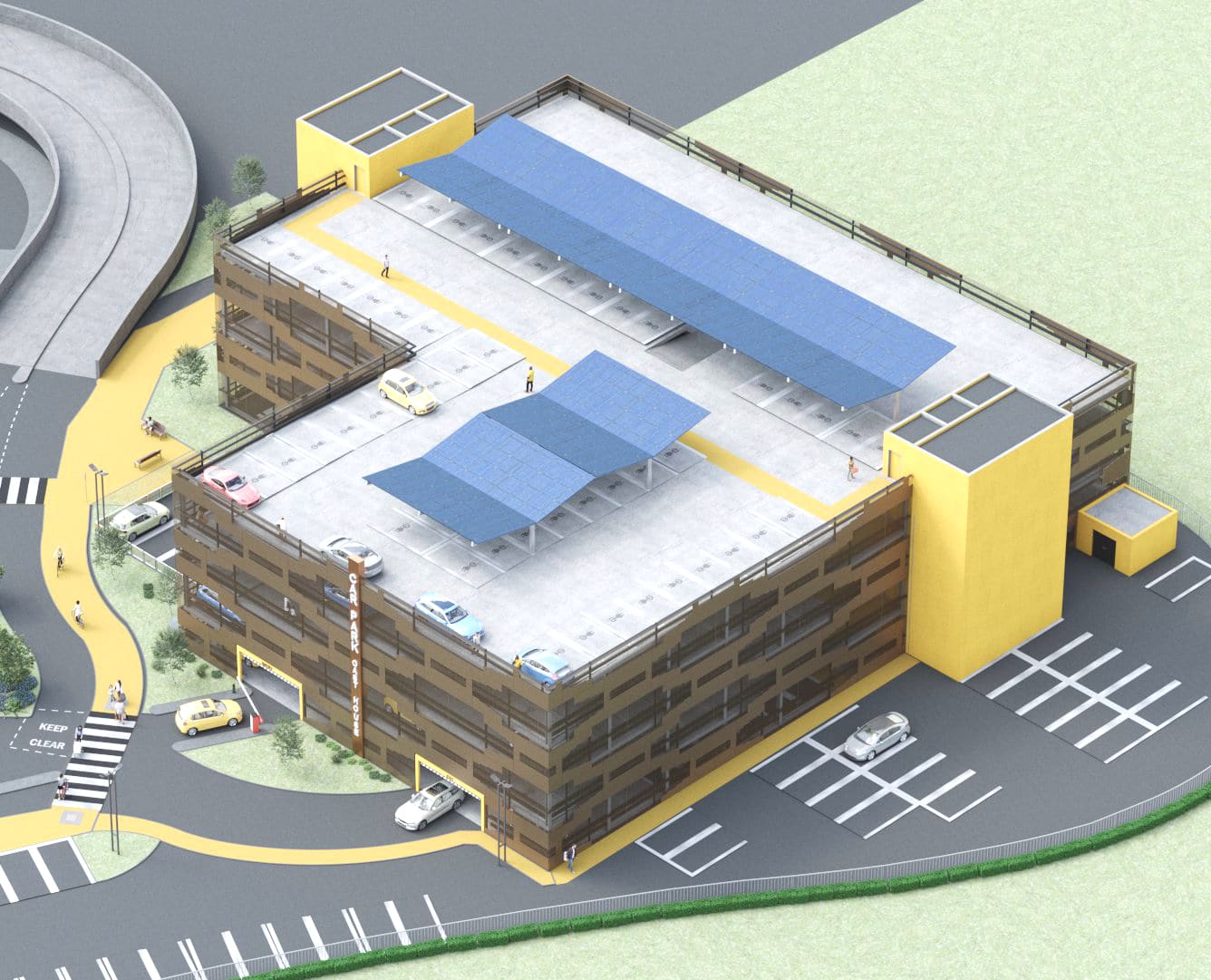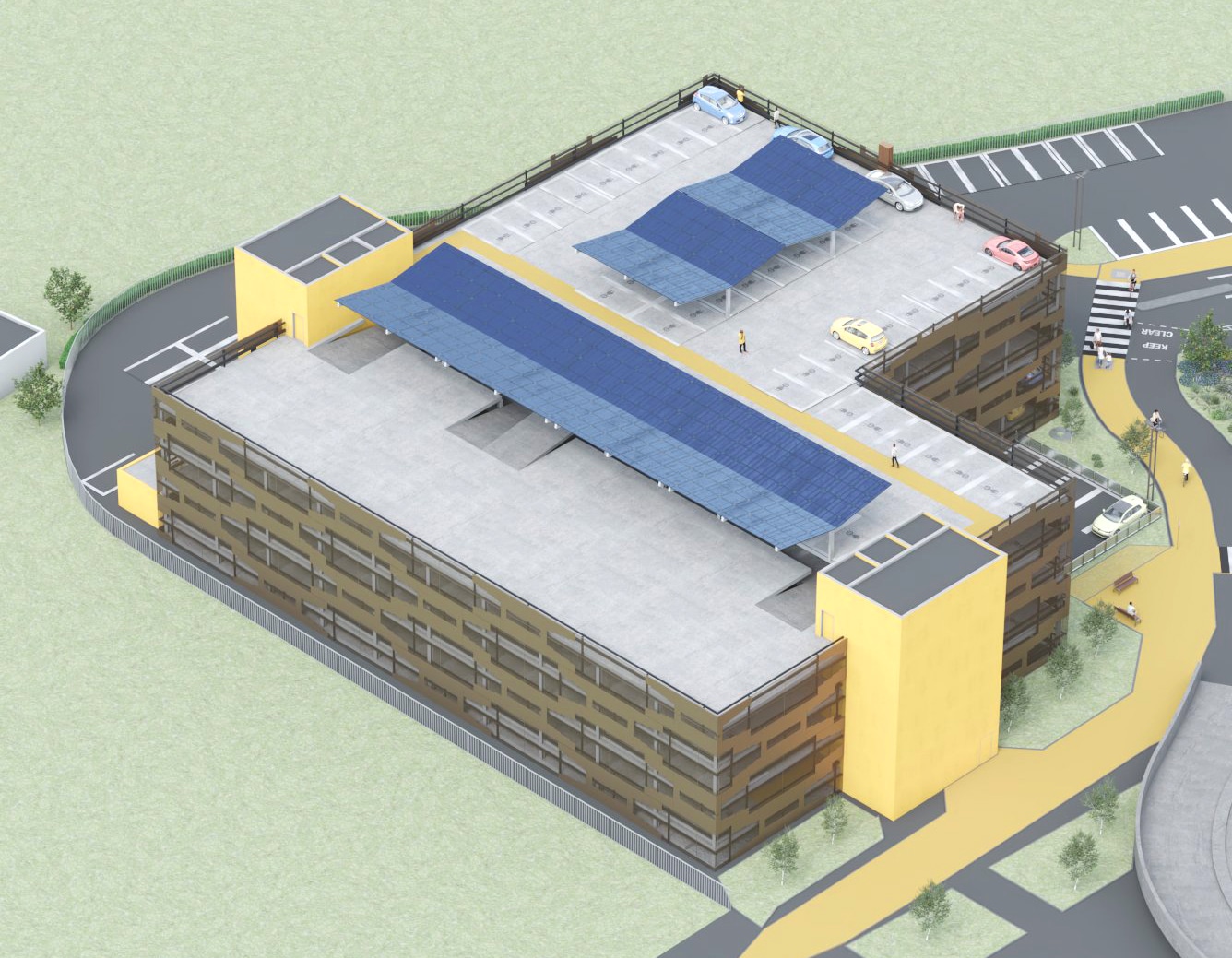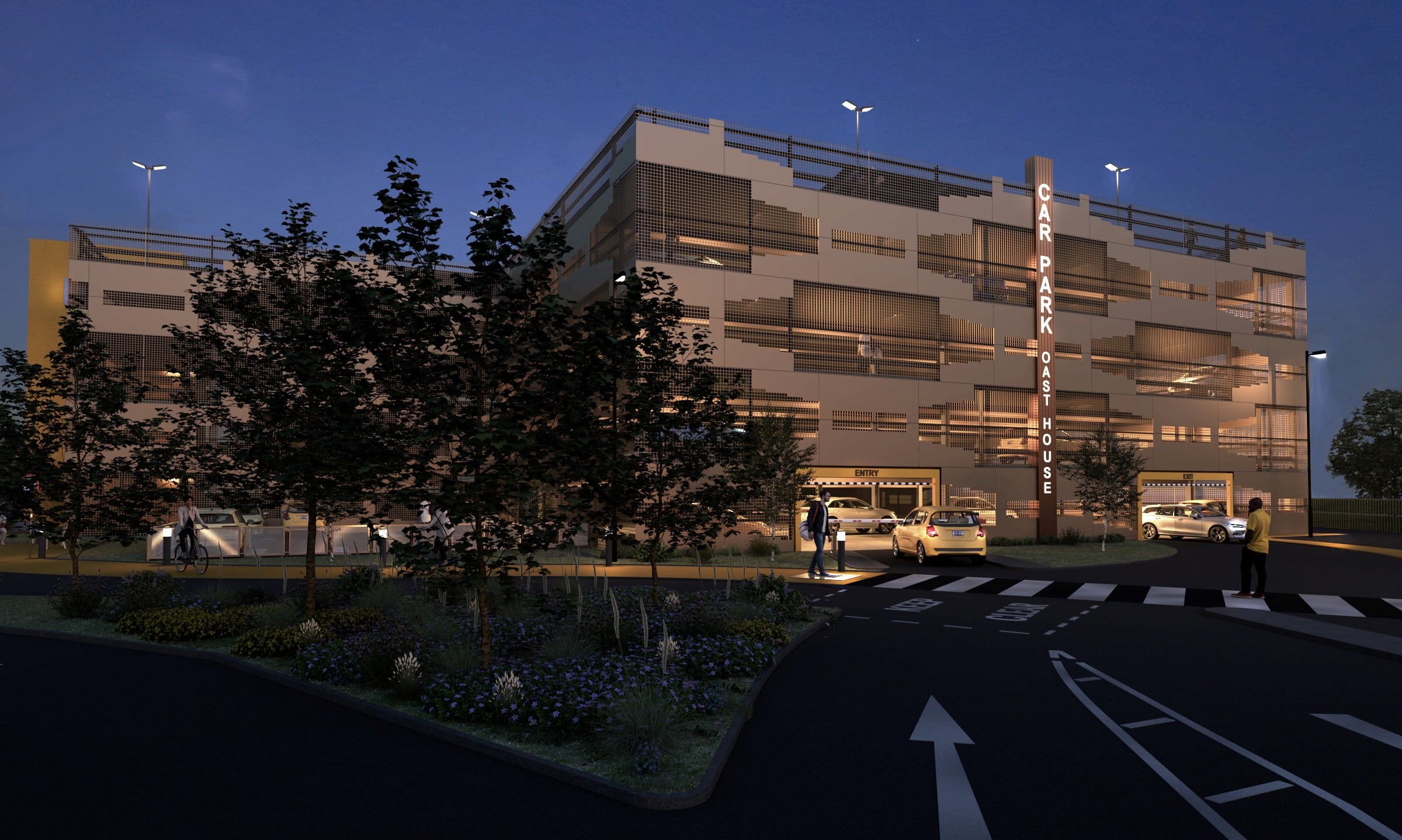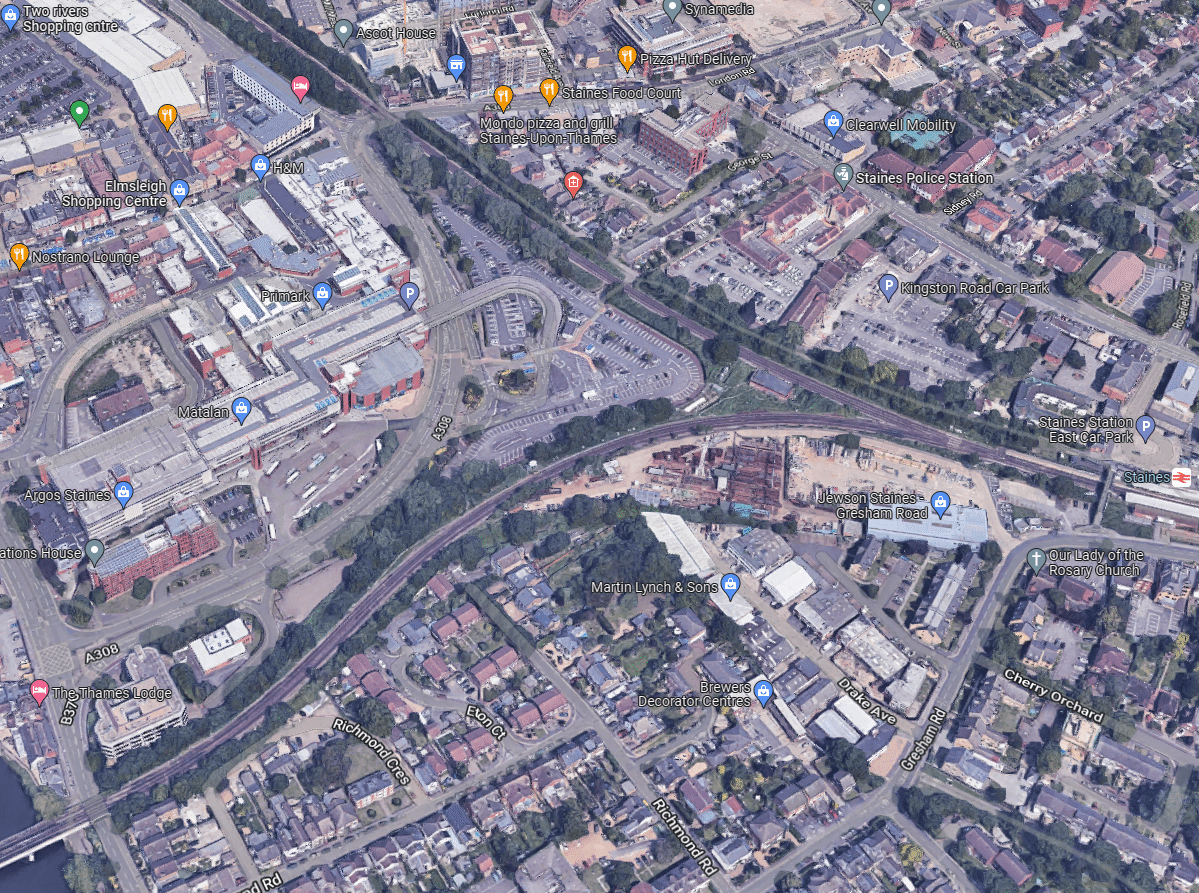Oasthouse MSCP
- Sector: Mobility & Masterplanning
- Client: Spelthorne Borough Council
- Project Management: Gleeds
- Location: Staines, Surrey
- Construction Costs: Undisclosed
- Status: Awaiting planning permission
Oasthouse is a new multi-storey car park in Staines. It is part of a much larger development of affordable housing and an NHS health and wellbeing facility. This is a modern design that will deliver a lightweight, low embedded carbon building, incorporating almost 400 new parking spaces. These, combined with the existing surface parking, provide over 500 spaces, 285 of which will have EV charging points.
The most striking design element of the project is the bold perforated facade that wraps around the building. We took our inspiration from an abstraction of the original Listed Oasthouse on the adjacent site with its emphasis on home, rest and repose and combined it with a horizontal design to incorporate a strong sense of movement, travel, arrival and departure. The finish will be anodised aluminium in a bronze colour.
Environmental Factors
- This MSCP will incorporate significant and comprehensive electric vehicle charging areas to future proof the car park as demand for charging grows.
- The building is also future proofed to allow for Autonomous Vehicle Parking since there are significant ground floor areas outside the building for pickup and drop off areas.
- Photovoltaic (solar) panels will generate sufficient energy for the lifts, lights and will contribute to the EV charging.
- The building is naturally ventilated on all sides and unheated. Fixed building services and low energy LED lighting will keep power consumption down and most of the lighting will be controlled to illuminate when outside lux levels dip below daylight.
- The car decks will be set to a slight slope to collect rainwater on the site to prevent any surcharging of the local surface water system. The rainwater will also be recycled for cleaning the car decks.
- The design includes a landscaping scheme which is heavily planted to encourage greater biodiversity.
